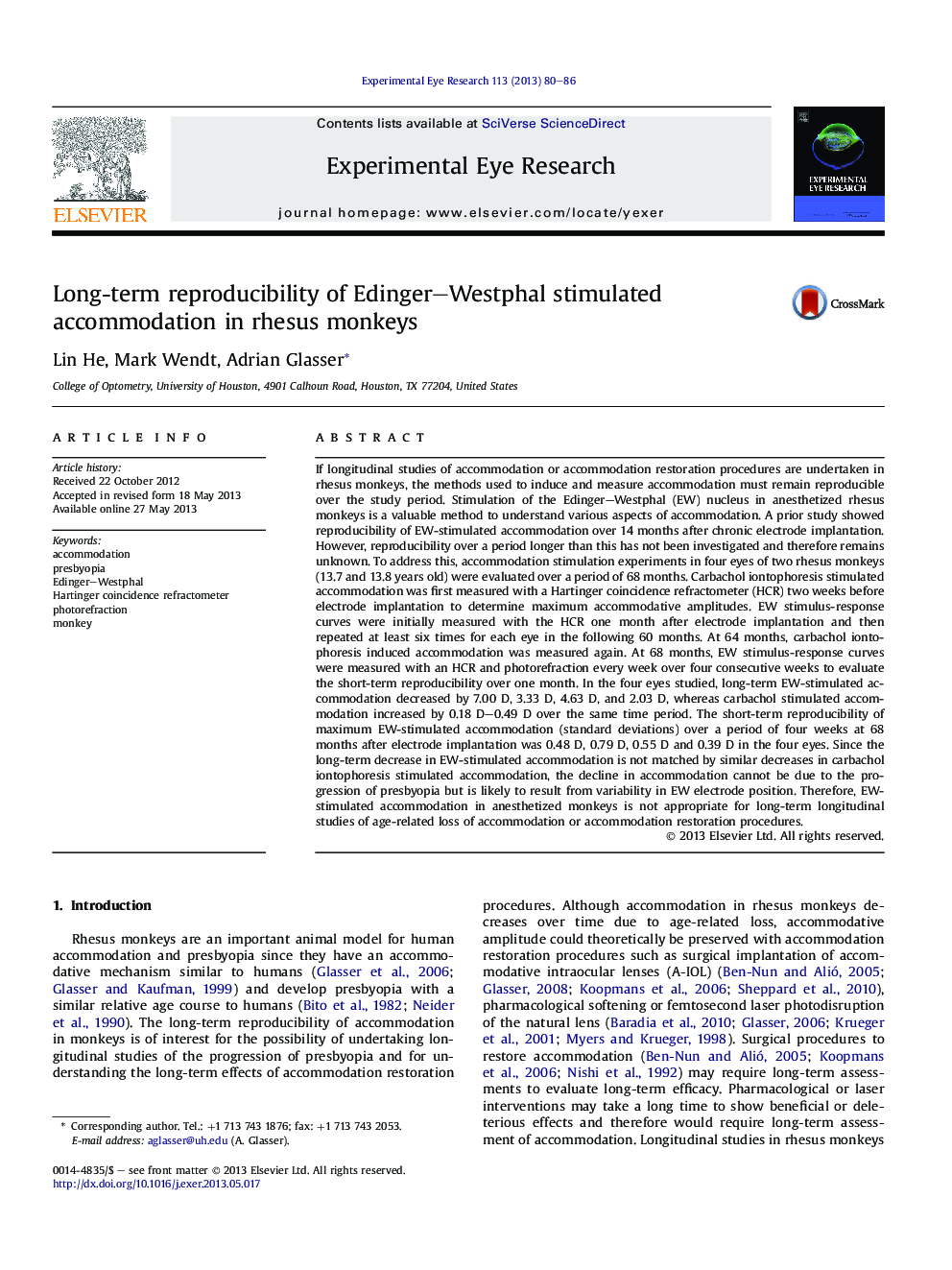| Article ID | Journal | Published Year | Pages | File Type |
|---|---|---|---|---|
| 6197263 | Experimental Eye Research | 2013 | 7 Pages |
â¢Reproducibility of EW-stimulated accommodation was evaluated over a 68-month period.â¢Accommodation was measured by Hartinger coincidence refractometer and photorefractor.â¢EW-stimulated accommodation is not appropriate for long-term longitudinal studies.
If longitudinal studies of accommodation or accommodation restoration procedures are undertaken in rhesus monkeys, the methods used to induce and measure accommodation must remain reproducible over the study period. Stimulation of the Edinger-Westphal (EW) nucleus in anesthetized rhesus monkeys is a valuable method to understand various aspects of accommodation. A prior study showed reproducibility of EW-stimulated accommodation over 14 months after chronic electrode implantation. However, reproducibility over a period longer than this has not been investigated and therefore remains unknown. To address this, accommodation stimulation experiments in four eyes of two rhesus monkeys (13.7 and 13.8 years old) were evaluated over a period of 68 months. Carbachol iontophoresis stimulated accommodation was first measured with a Hartinger coincidence refractometer (HCR) two weeks before electrode implantation to determine maximum accommodative amplitudes. EW stimulus-response curves were initially measured with the HCR one month after electrode implantation and then repeated at least six times for each eye in the following 60 months. At 64 months, carbachol iontophoresis induced accommodation was measured again. At 68 months, EW stimulus-response curves were measured with an HCR and photorefraction every week over four consecutive weeks to evaluate the short-term reproducibility over one month. In the four eyes studied, long-term EW-stimulated accommodation decreased by 7.00Â D, 3.33Â D, 4.63Â D, and 2.03Â D, whereas carbachol stimulated accommodation increased by 0.18Â D-0.49Â D over the same time period. The short-term reproducibility of maximum EW-stimulated accommodation (standard deviations) over a period of four weeks at 68 months after electrode implantation was 0.48Â D, 0.79Â D, 0.55Â D and 0.39Â D in the four eyes. Since the long-term decrease in EW-stimulated accommodation is not matched by similar decreases in carbachol iontophoresis stimulated accommodation, the decline in accommodation cannot be due to the progression of presbyopia but is likely to result from variability in EW electrode position. Therefore, EW-stimulated accommodation in anesthetized monkeys is not appropriate for long-term longitudinal studies of age-related loss of accommodation or accommodation restoration procedures.
